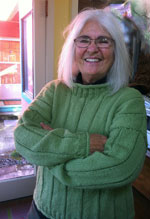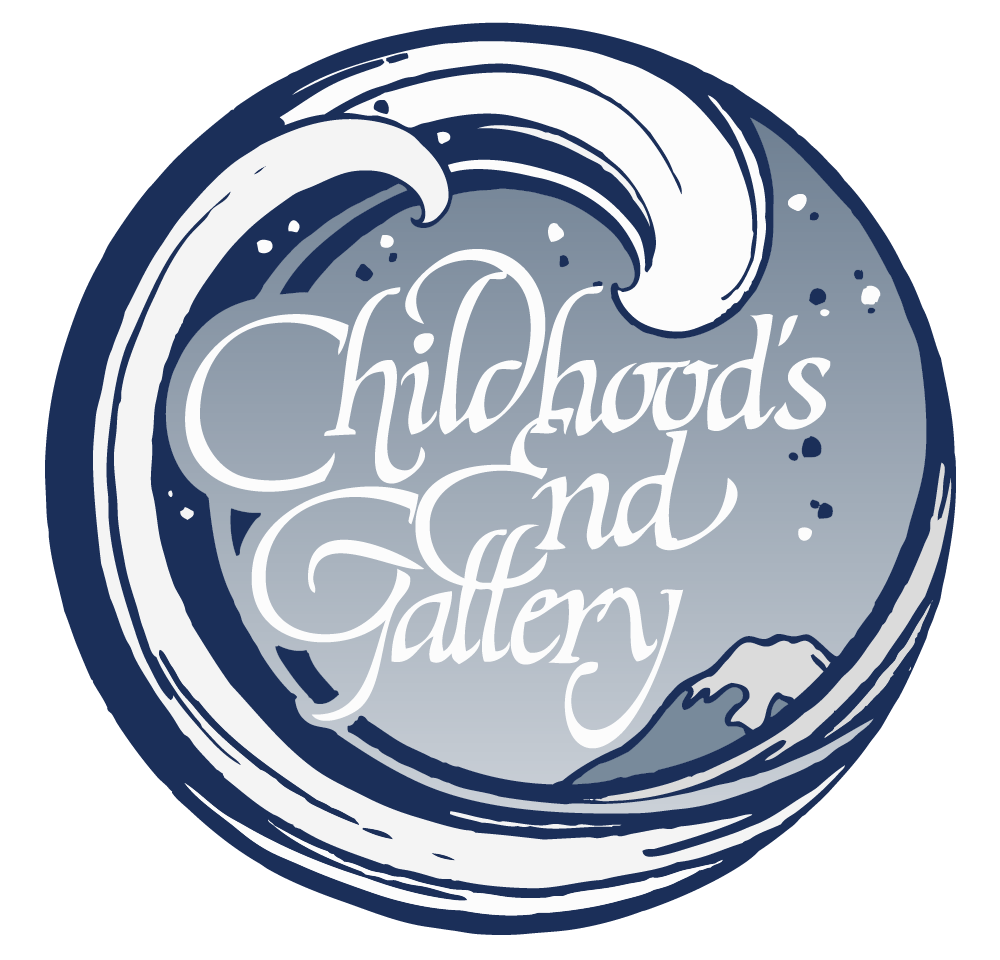Marilyn Frasca
Artist Statement
 I was born in New York City and studied art at Cooper Union in the late 50s where I studied printmaking with Robert Blackburn. At the San Francisco Art Institute (then called The California School of Fine Arts), I studied monotype printmaking with Nathan Oliveira.
I was born in New York City and studied art at Cooper Union in the late 50s where I studied printmaking with Robert Blackburn. At the San Francisco Art Institute (then called The California School of Fine Arts), I studied monotype printmaking with Nathan Oliveira.
I made paintings in studios around the country and taught drawing and painting in New York, Vermont and New Hampshire before coming to The Evergreen State College in 1973 to be a part of the development of interdisciplinary studies. My work has been exhibited on both coasts in galleries and museums.
Using the word monotype makes sense to me because I begin with a single print made from an inked plate. I use a variety of techniques to create textures which I later study to see what is there. Working with the image that comes to me I am able to sharpen and develop a visual and emotional response to the textures and shapes of the print which seem to clarify and assemble themselves into astonishing pictures of people, places and events that have no recognizable connection to my life. I do this with drawing materials that include charcoal and pastel. As I work it is as if I remember this person and her or his expression. It is an emotional quality that is slowly revealed as I draw out the image. I can feel and see the eyes, the curve of a forehead, a hand holding something.
The presence of these figures exists in an ether of memory beyond my own existence, extending to a past and to a future, giving clear directions through textures of just how and what I should draw. Usually I feel an immediate compassion for the figure that shows itself. Often genderless, out of time and looking intently at me or somewhere else or at someone else. The look is occasionally pleading, knowledgeable, and communicates an awareness of my presence and scrutiny of its physical being and its relation to myself and the world in which I live. In this way the drawings assert emotions in their own terms and offer assorted facts that visually describe answers to questions I am slowly seeing and learning to ask.
See more of Marilyn's working process
Artist Statement

I made paintings in studios around the country and taught drawing and painting in New York, Vermont and New Hampshire before coming to The Evergreen State College in 1973 to be a part of the development of interdisciplinary studies. My work has been exhibited on both coasts in galleries and museums.
Using the word monotype makes sense to me because I begin with a single print made from an inked plate. I use a variety of techniques to create textures which I later study to see what is there. Working with the image that comes to me I am able to sharpen and develop a visual and emotional response to the textures and shapes of the print which seem to clarify and assemble themselves into astonishing pictures of people, places and events that have no recognizable connection to my life. I do this with drawing materials that include charcoal and pastel. As I work it is as if I remember this person and her or his expression. It is an emotional quality that is slowly revealed as I draw out the image. I can feel and see the eyes, the curve of a forehead, a hand holding something.
The presence of these figures exists in an ether of memory beyond my own existence, extending to a past and to a future, giving clear directions through textures of just how and what I should draw. Usually I feel an immediate compassion for the figure that shows itself. Often genderless, out of time and looking intently at me or somewhere else or at someone else. The look is occasionally pleading, knowledgeable, and communicates an awareness of my presence and scrutiny of its physical being and its relation to myself and the world in which I live. In this way the drawings assert emotions in their own terms and offer assorted facts that visually describe answers to questions I am slowly seeing and learning to ask.
See more of Marilyn's working process































































































